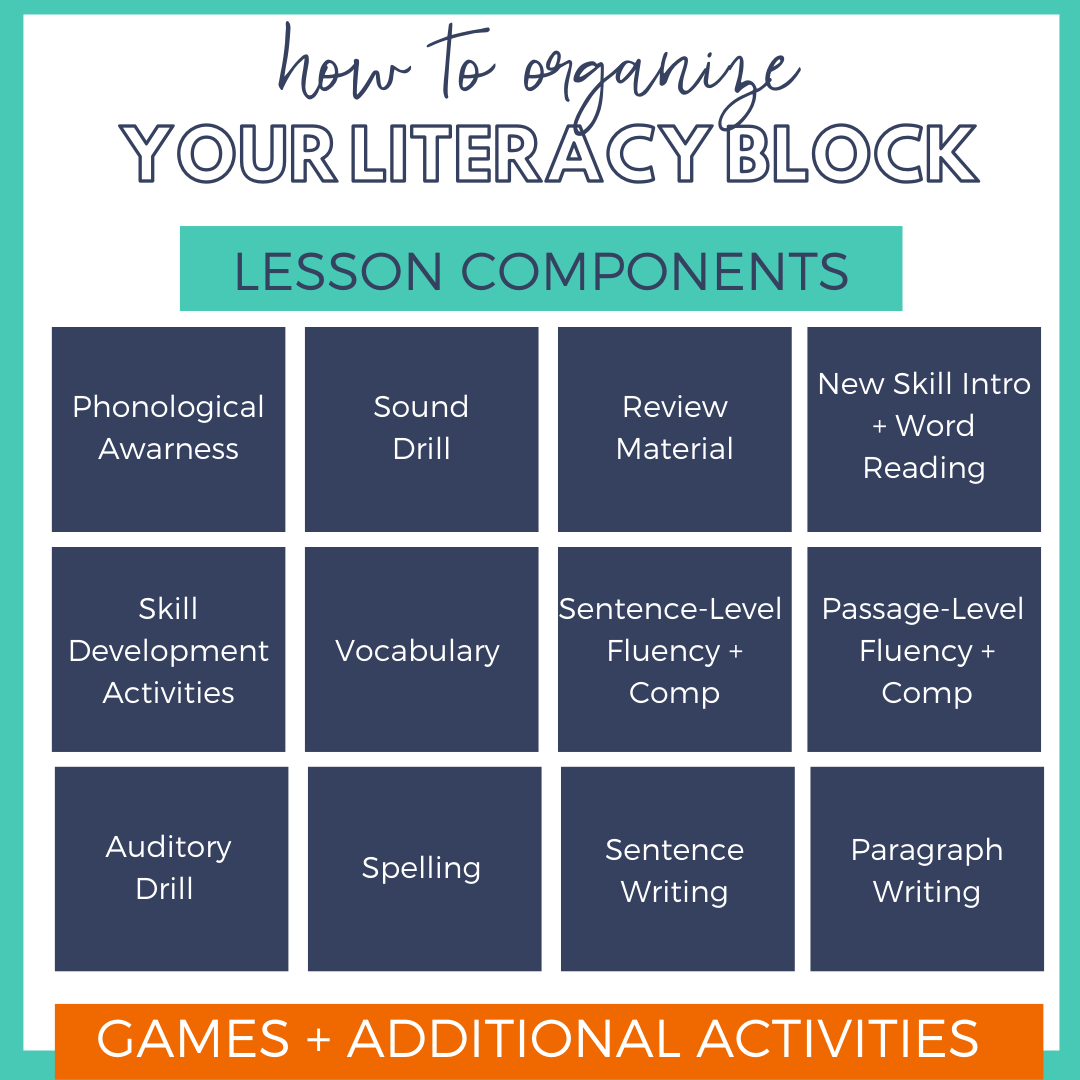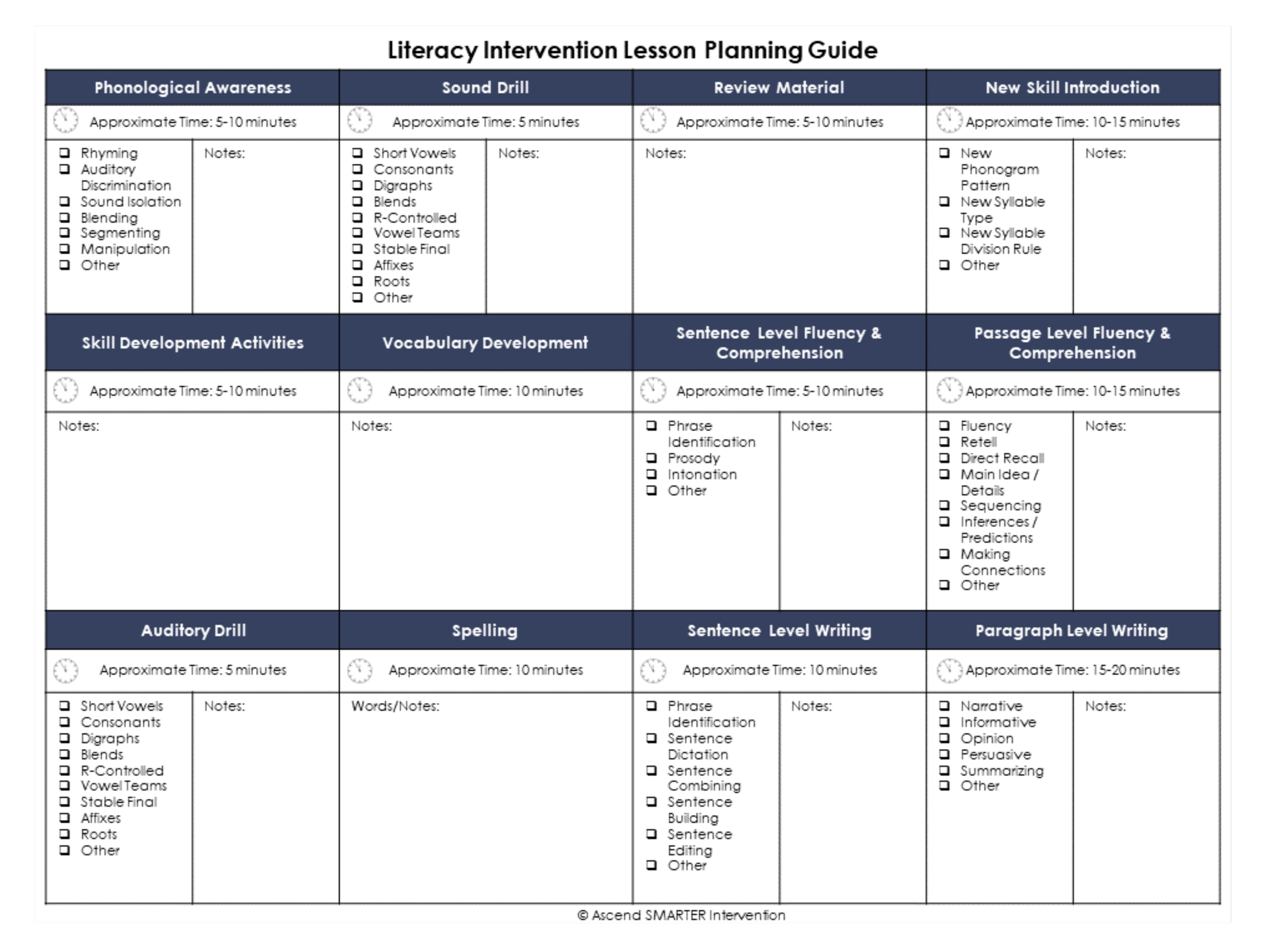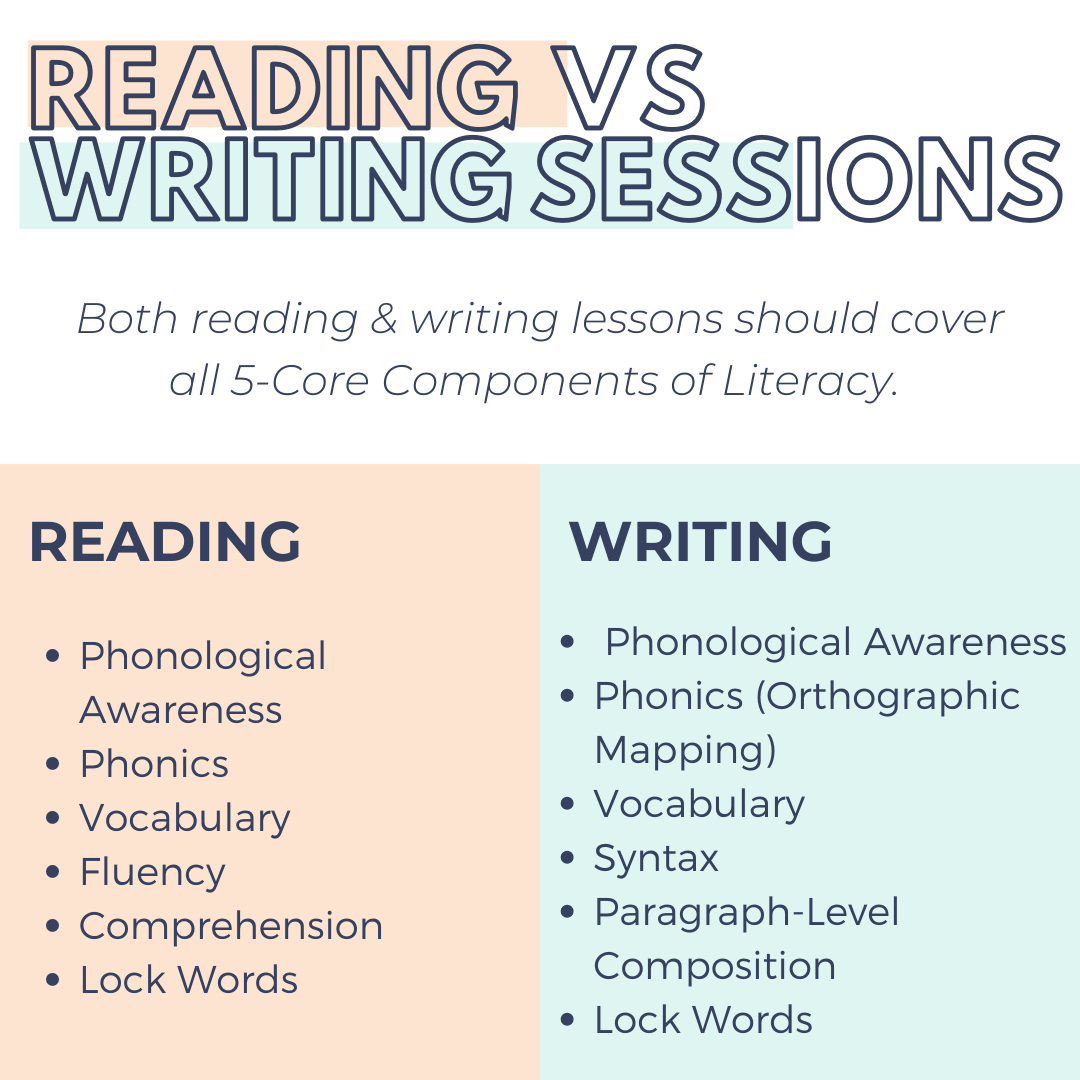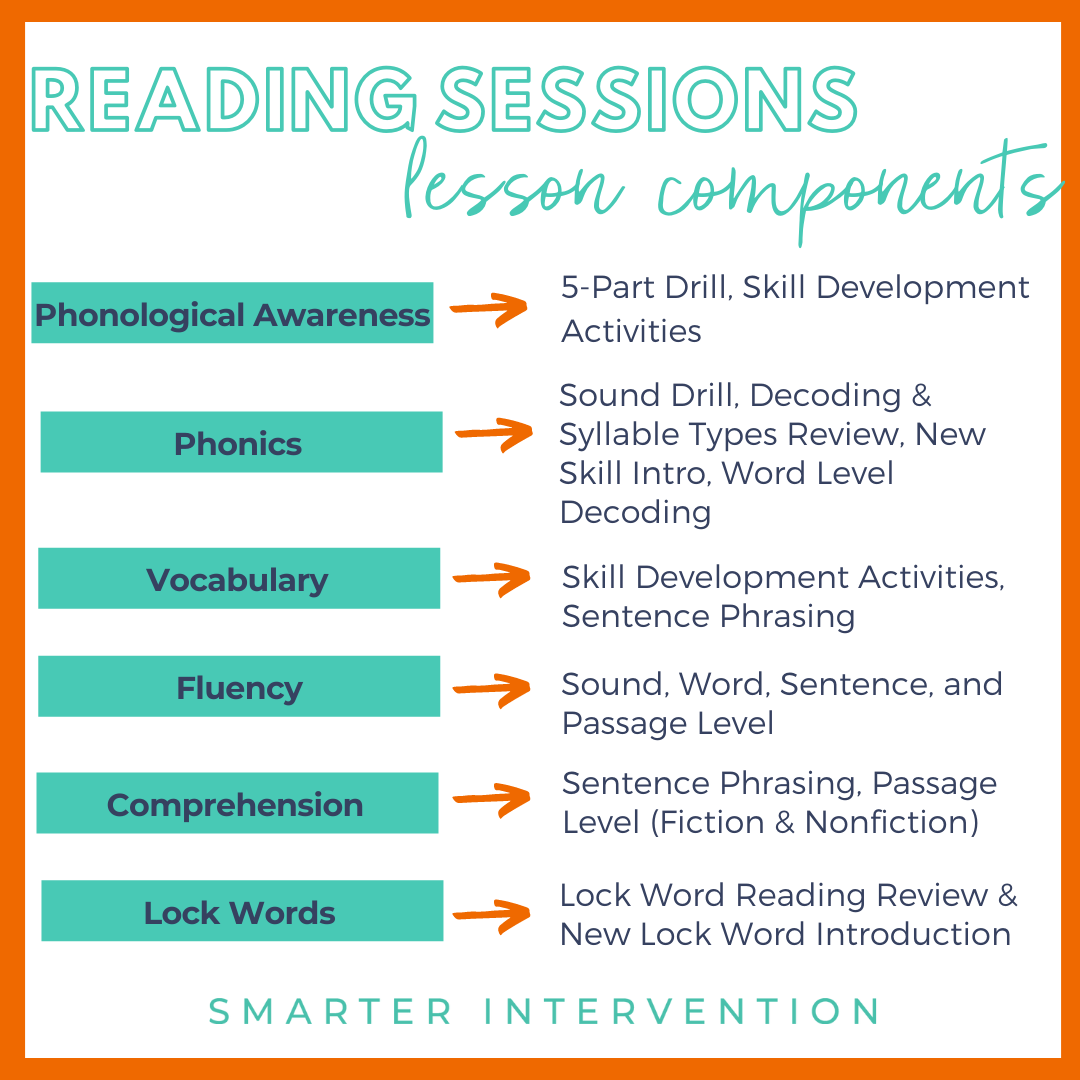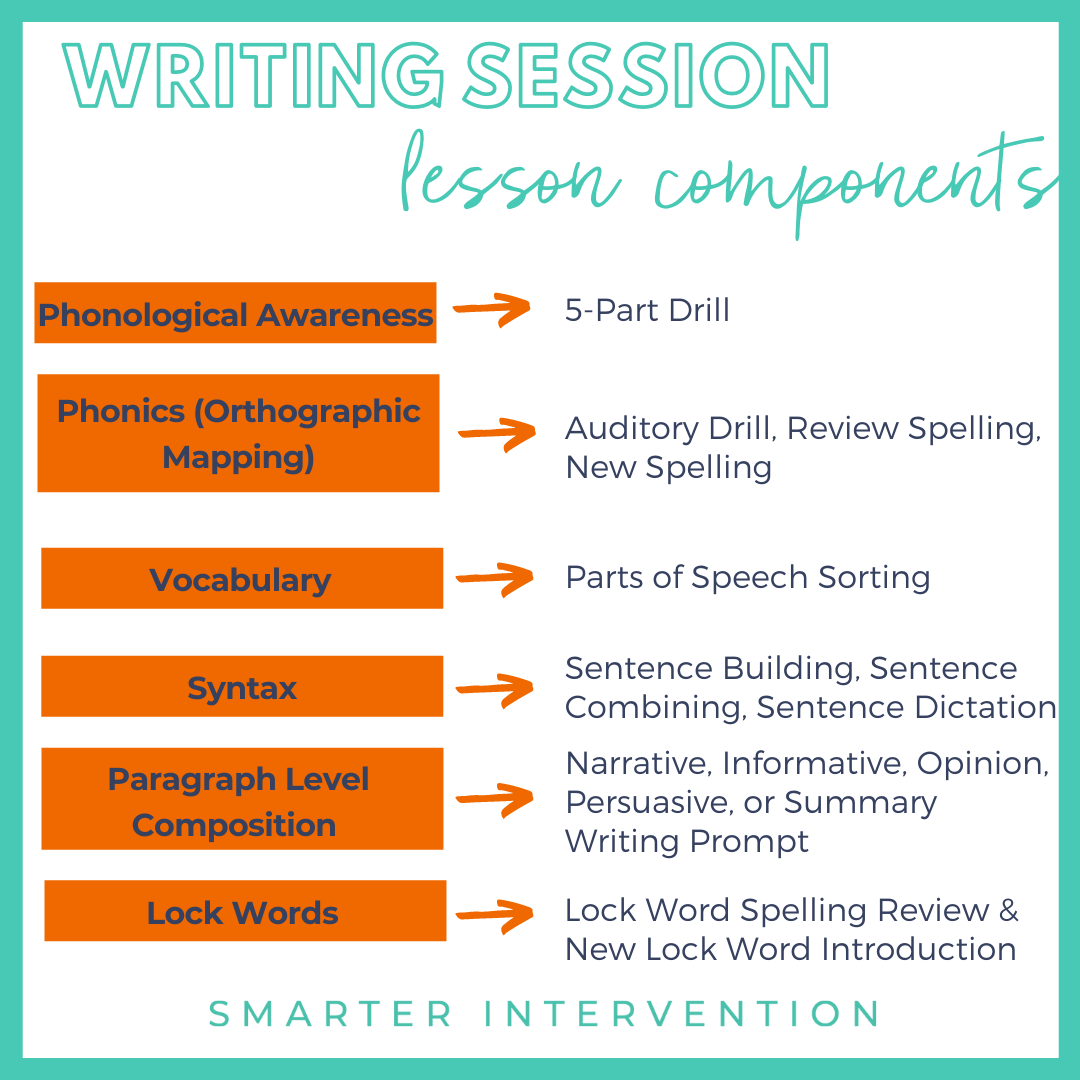How Do I Fit It All In? Organizing Your Literacy Block to Align with the Science of Reading
Have you ever thought to yourself - how in the world am I ever going to have time to go through all of this?
If you’re anything like us, the idea of research-based instruction and data-driven practices gets you super excited….but if it makes you nervous or feels overwhelming - that’s okay too!
One of the most important things we can do to eliminate overwhelm is to get structure in place.
And the good news is that a comprehensive collection of research over the last several decades known as the Science of Reading helps make clear what we need to incorporate into that structure.
But, we’re not going to lie - there is a lot that we should be including in our literacy block to align with the Science of Reading.
Between explicitly teaching the 5 Core Components of Literacy (phonological awareness, phonics, vocabulary, reading fluency, and reading comprehension), targeting individual student needs, tracking data, and pulling review activities - it can definitely feel like a lot!
But here’s the thing, research-based instruction that aligns with the Science of Reading does not have to be hard.
You just need a clear framework you can use to plan your lessons in alignment with research-based principles so that you know you are covering everything you need without it feeling super overwhelming!
First things first -
What are the most important parts to add to a lesson plan?
We’re so glad you asked, at the simplest level - your lesson plans need to target the 5-Core Components of Literacy in a systematic way.
This means, that you are starting at the beginning and working your way up through more difficult skills for phonological awareness, phonics, vocabulary, fluency, comprehension, and writing.
Step 1 - Start with a scope and sequence.
Having a clear scope and sequence that maps all of this out for you is going to be a game-changer when it comes to planning your lesson content.
Think of your scope and sequence as the blueprint and the actual lesson materials as the wood, nails, drywall, and flooring when you are building your house.
Is it possible to build a house without a plan? I guess so - but having a plan ensures that your house (and your reading instruction!) is structurally sound and doesn’t leave out key pieces like doors or plumbing (or key literacy skills in this case!).
If you already have a scope and sequence (that targets ALL of the core literacy components) then you can check this step off the list!
If you don’t have one yet, or you aren’t sure where to begin - no worries. You can grab our scope & sequence here. You can use this to see how we have outlined all of our skills across different levels and use it to help guide your planning process, too!
Now that you have your scope and sequence outlined - you need to make sure that you have all of the activities prepped and accounted for to support the five core components of literacy. By having your activities mapped out and your lessons planned, you will have a better timeline for your instruction so that you can make sure you either have enough time to complete everything (if you are working on a specific calendar like at school) or an estimated program duration if you have as long as you need with a student.
Step 2 - Organize your lesson plan.
Now - we are going to preface this by saying that looking at the following skills and lesson components can feel like a lot. We get it. As we talk about each of these components - notice that we talk about the components of a lesson, not a single class period or session. These can take several days to complete.
You can see all of the lesson components we include in the picture to the right.
Depending on your setting, the frequency of your sessions, the number of students you’re working with, and how long your sessions are, you may need to split these components up in different ways.
Start by thinking about your setting.
Typically, we are either working with students in a general education classroom or we are working with students who need extra support (such as intervention or special education). We primarily work with students who need extra support, so we’re going to start there.
How to Organize Your Literacy Intervention or Special Education Lessons to Align with the Science of Reading
If you are working with students (one-on-one or in a small group setting), we recommend getting through as many lesson components as possible per session. Depending on how much time you have with your students, you will work through as many of the lesson plan components as possible. That said, we don’t want to speed through a lesson. We go as fast as we can and as slow as we must.
Now, it’s impossible to predict how long each student or student group will take to work through a lesson because so many factors contribute to this, including (but not limited to) how big the reading gap is, a student’s working memory, processing speed, cognitive ability, language ability, attention - the list goes on and on.
We can create a general timeframe so that we can be realistic with how much we might be able to complete in a given timeframe (knowing that we may need to adjust and be flexible).
A few options for scheduling in an intervention setting:
1 - Try breaking sessions into reading & writing days
During one session, work through the 5-Core Components of Literacy through a reading lens. Then in the next session, work through the 5-Core Components of Literacy through a writing lens. This allows you to really dig in and support students in each of the key components.
2 - Get through everything you can & send the rest as home practice
This is a great option for students who are able to work independently or are grasping concepts quickly. Tasks like paragraph-level writing are especially good to send as home practice because this is something many parents or caregivers can help with even without knowledge of the different syllable types and phonogram patterns. Now, some students are not able to complete home practice for a variety of different reasons, so if that’s the case - you want to be careful not to just skip full sections of the lesson plan. Instead, you can provide an abbreviated version (read 10 words instead of 20, think about vocabulary for three words instead of five). Or…you can try another option, like option 3.
3 - Follow the lesson plan guide and get through as many concepts as you can
Then, pick back up where you left off the next time. This is a great option for students who move slower and need ongoing support and distributed practice. It’s also a great option for students who aren’t able to complete the home practice but need practice with each of the skills. Keep in mind that the end goal is that we’ve got students with a well-rounded set of skills across phonological awareness, phonics, vocabulary, fluency, and comprehension - not that we crank through all the sound patterns as quickly as we can while leaving the rest behind.
You may also be working with students in the classroom, not to worry, we’ve got you covered too!
How to Organize Your Literacy Block in the Classroom
If you work with your students every day, you will organize your lessons slightly differently.
We recommend breaking your lessons down over the course of the 5-day school week. We also recommend breaking your literacy block into two sections. First, what is being presented to the whole class, and second, what is being presented in small groups.
Ideally, you want to be teaching big-picture concepts to the whole group and then focusing on listening to students read and working on helping students through the literacy acquisition process in smaller groups so you can start to understand where breakdowns may be occurring.
This might look something like this.
When following a Science of Reading-aligned structure, we recommend students learn one new pattern (either a new phonogram, syllable type, or syllable division pattern) each week and then receive extended practice throughout those five days with a focus on the other core components (phonological awareness, vocabulary, reading fluency, reading comprehension, and even writing). You can still fit in all of the key lesson components, and you have room to differentiate activities up or down based on the students you are working with. Again, the goal is not that students can just crank through each of the phonogram patterns but rather, that they have an understanding of each of the five core components of literacy and that they can see how those concepts are intertwined.
We know that this feels like a lot…
…but it’s not impossible, and if anyone can be successful with it - it’s you.
And to make it easier for you - we wanted to share our Science of Reading Blueprint (which includes our scope & sequence AND lesson planning guides) with you. These resources will help you determine what actually needs to be included in a Science of Reading-based lesson and how to organize your literacy block so that nothing gets left out. Download the blueprint below to grab the lesson planning guides and some other free goodies!


